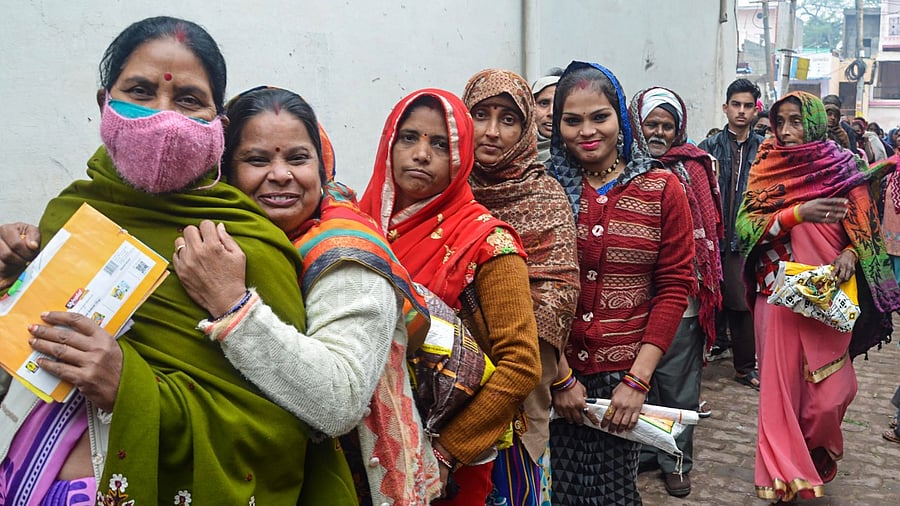
Before the rise of Indira Gandhi in the Congress and national politics, there was Sucheta Kripalani (nee Majumdar). She was married to Gandhian socialist Acharya (JB) Kripalani - a staunch critic of Nehruvian socialism who later joined C Rajagopalachari's Swatantra Party. Sucheta Kripalani, however, continued in the Congress and was a minister in the Uttar Pradesh government.
In autumn 1963, the Kamaraj Plan kicked in, and like many party stalwarts, UP chief minister Chandra Bhanu Gupta was asked to relinquish office. To spite Jawaharlal Nehru's and his chief tormentor in state politics, Chaudhary Charan Singh, Gupta hoisted a rank outsider Sucheta Kriplani as the chief minister of UP.
It was under her leadership that the Congress contested the 1967 elections in the state. In a big jolt to the grand old party, the Congress failed to win a majority in UP for the first time since Independence. More surprising was the sharp drop registered in the number of women MLAs, with only six female candidates emerging victorious in 425 constituencies for which elections were held. To date, the 4th UP assembly has the record for lowest representation of women lawmakers.
Also Read | Dining with Dalits: Mere 'noblesse oblige'
Strong woman leadership at the top does not necessarily translate into equitable participation in political processes, especially when winnability is the chief criterion in candidate selection.
Even during Indira Gandhi years, women representation in the UP assembly remained woefully low. The sharpest rise was registered in 1985 under Rajiv Gandhi's leadership when 31 women MLAs were elected.
The 1990s saw the weakening of the Congress and the rise of the Mandal parties. The women representation again turned south to 10 in 1991 and 14 in the 1993 Assembly polls in UP. The decade also witnessed the rise of the second most influential woman politician in the heartland politics, Bahujan Samaj Party chief Mayawati.
In the 1996 elections, the first after her ascension as the chief minister of UP, 20 women candidates won their elections, taking the cumulative tally of women MLAs in 13 assemblies between 1952 and 1996 to 223. Data shows that an overwhelming majority of these women lawmakers were from the upper castes or those whose close relations had been active in electoral politics. The Other Backward Caste (OBC) representation was surprisingly low - about half of the Scheduled Castes (SCs). Amongst Dalit women lawmakers, almost 85 per cent belonged to Jatav or Pasi communities - the numerically dominant sub-groups amongst the SCs.
In 2007, three fewer women MLAs (23) were elected to the assembly than the previous one, but the elections ended a protracted political uncertainty in UP as voters obliged Mayawati with a majority government.
Also Read | Yogi's win would change BJP's internal matrix
However, women's participation and representation in UP assembly elections have picked up in the last decade. The 2012 UP polls, in many ways, was a watershed when the polling percentage of female electors surpassed male voters for the first time. The increase indicated women emerging as a separate constituency in the heartland states. Thirty-five women were elected to the assembly, breaking the earlier record of 30 seats in 1985.
This trend was repeated five years later when female voters participation further improved to 63 per cent compared to 59 per cent polling by males. A new record was set, with electors returning 43 women candidates to the state assembly. In absolute numbers, 84 lakh more male electors cast their votes in the 2002 state elections than women voters. This difference had narrowed down to less than 47 lakhs by 2017.
This increase in women participation and representation has also engendered studies on comparative assessment on the performance of women lawmakers vis a vis their male counterparts. Research shows women legislators raise economic activity in their constituencies 1.8 percentage points more than their male counterparts. Male legislators are three times more likely to have criminal charges against them, and female MLAs are more likely to oversee the completion of centrally sponsored schemes like Pradhan Mantri Gram Sadak Yojana.
The rise in women electors in UP politics as a differentiator is real and perceptible. As a distinct and discernible pressure group, they are forcing political parties to reach out to women both in terms of offering larger representation and policy formation.
Women MLAs in UP Assembly: 2017 - 43, 2012 - 35, 2007 - 23, 2002 - 26, 1996 - 20, 1993 - 14, 1991 - 10, 1989 - 18, 1985 - 31, 1980 - 23, 1977 - 11, 1974- 21, 1969 - 18, 1967 - 6, 1962 - 20, 1957 - 18, 1952 - 20
More women electors voting than males (in terms of percentage)
2002: Female 50.25 per cent; Male 56.72 per cent
2007: Female 41.92 per cent, Male 49.35 per cent
2012: Female 60.28 per cent, Male: 58.68 per cent
2017: Female: 63.31 per cent, Male 59.15 per cent
(Source: Election Commission of India)
(Sumit Pande is a journalist)
Disclaimer: The views expressed above are the author's own. They do not necessarily reflect the views of DH.
Check out DH's latest videos